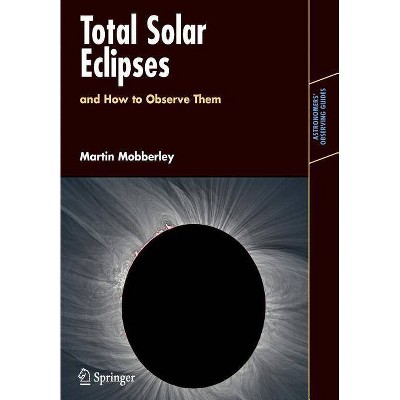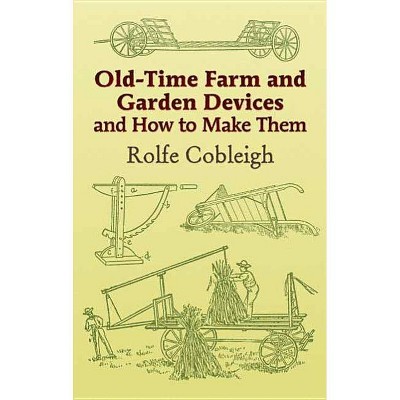Asteroids and Dwarf Planets and How to Observe Them - (Astronomers' Observing Guides) by Roger Dymock (Paperback)

Similar Products
Products of same category from the store
AllProduct info
<p/><br></br><p><b> About the Book </b></p></br></br>The dwarf planets and asteroids themselves, their origins, orbits, and composition are described, and how amateur astronomers can play a part in their detection, tracking, and imaging. Numerous observing techniques are covered in depth. There are also lists of amateur and professional organizations and how to submit your own observations to them.<p/><br></br><p><b> Book Synopsis </b></p></br></br>Dwarf planets (which were formerly called asteroids except for the planet Pluto), and the smaller Solar System bodies still called asteroids today, are making front page news, particularly those that are newly discovered and those that might present a hazard to life on Earth by impacting our planet. In this age of giant telescopes and space probes, these small Solar System bodies have advanced from being tiny points of light to bodies worthy of widespread study. This book describes the dwarf planets and asteroids themselves, their origins, orbits, and composition, and at how amateur astronomers can play a part in their detection, tracking, and imaging. The book is divided into two parts. Part I describes physical properties (including taxonomic types) of dwarf planets and asteroids, how they formed in the early life of the Solar System, and how they evolved to their present positions, groups, and families. It also covers the properties used to define these small Solar System bodies: magnitude, rotation rates (described by their light-curves), and orbital characteristics. Part II opens with a description of the hardware and software an amateur or practical astronomer needs to observe and also to image asteroids. Then numerous observing techniques are covered in depth. Finally, there are lists of relevant amateur and professional organizations and how to submit your own observations to them.<p/><br></br><p><b> From the Back Cover </b></p></br></br>ASTRONOMERS' OBSERVING GUIDES provide up-to-date information for amateur astronomers who want to know all about what it is they are observing. This is the basis of the first part of the book. The second part details observing techniques for practical astronomers, working with a range of different instruments. ------------------------------------------------------------------------------------------------------ We live in a violent universe. The media constantly remind us of the possibility of an object suddenly appearing and hitting Earth. A hit by an asteroid is believed to have spelled the end of the dinosaurs. Such a collision by an object from space could cause another extinction event, if the object were large enough. And such objects are definitely out there. Often called "the vermin of the sky," asteroids roam our Solar System often unseen. Many have been tracked, and their orbits calculated. But there are still many to be discovered and assessed. Many amateur astronomers are helping in this effort, sometimes even working with professional astronomers, to contribute to our knowledge and avert danger. Some people just enjoying locating these or the dwarf planets, such as Pluto, and then following their paths. Whatever your interest, Asteroids and Dwarf Planets and How to Observe Them will help you get started. It will tell you what you are looking at and why you should look. It will also help you learn how to look. This is definitely an area where amateurs can make a difference. Roger Dymock, in clear, engaging language can help you get started right now!<p/><br></br><p><b> Review Quotes </b></p></br></br><br><p>From the reviews: </p><p>"A step-by-step guide to visual observing shows how to find and follow asteroid images. ... Dymock's book is full of good illustrations, many in colour. ... the book is a broad overview of current asteroid science ... . it will give interested amateurs some good ideas about how they could contribute, and will point them to sources of more detailed information. Heartily recommended." (Edward Bowell, Journal of British Astronomical Association, Vol. 121 (2), 2011)</p><p>"Roger Dymock has all the knowledge necessary to instruct a newcomer in the art of asteroid observing. Fortunately, he has had the patience to assemble this excellent observing manual for any potential student of minor planets and the more distant dwarf planets too. Owning the book is like having Roger as your personal mentor. ... Roger's book 'does exactly what it says on the tin' and will be invaluable to all asteroid observers, even those with some mileage on the clock." (Martin Mobberley, Astronomy Now, June, 2011)</p><p>"Dymock, an accomplished optical observer, asteroids offer the opportunity for amateur astronomers to enjoy challenging celestial targets and to augment the scientific research of professional astronomers. ... guides readers through the modern technology and software with step-by-step instructions, and includes an exhaustive set of references to related Web sites. This is a truly outstanding manual for anyone who has an interest in studying these relics of the birth of the solar system. Summing Up: Highly recommended. Primarily amateur astronomers, but also lower-division undergraduates and professionals/practitioners." (D. E. Hogg, Choice, Vol. 48 (10), June, 2011)</p><p>"You get two books for the price of one here. The first 60 pages gives the formal definitions of small Solar System bodies ... . The remaining two-thirds of the book discusses how the amateur can observe these objects. ... There are certainly many excellent hints and tips. ... Relevant websites, software packages, and books are listed in the Appendices - and there are useful links to sources where you can select your own targets. ... I like this book." (Fiona Vincent, The Observatory, Vol. 132 (1226), February, 2012)</p><br><p/><br></br><p><b> About the Author </b></p></br></br>Roger Dymock lives in Hampshire, England. He is a Fellow of the Royal Astronomical Society. His published work includes Journal of the BAA: "The Observapod - a GRP observatory"; Minor Planet Bulletin, No. 32 2005: "Lightcurve of 423 Diotima"; Sky at Night magazine: "How to track an asteroid"; and Journal of the BAA: "A method for determining the V magnitude of asteroids from CCD images" (jointly with Dr Richard Miles).
Price History
Cheapest price in the interval: 49.99 on November 8, 2021
Most expensive price in the interval: 49.99 on December 20, 2021
Price Archive shows prices from various stores, lets you see history and find the cheapest. There is no actual sale on the website. For all support, inquiry and suggestion messages communication@pricearchive.us




















